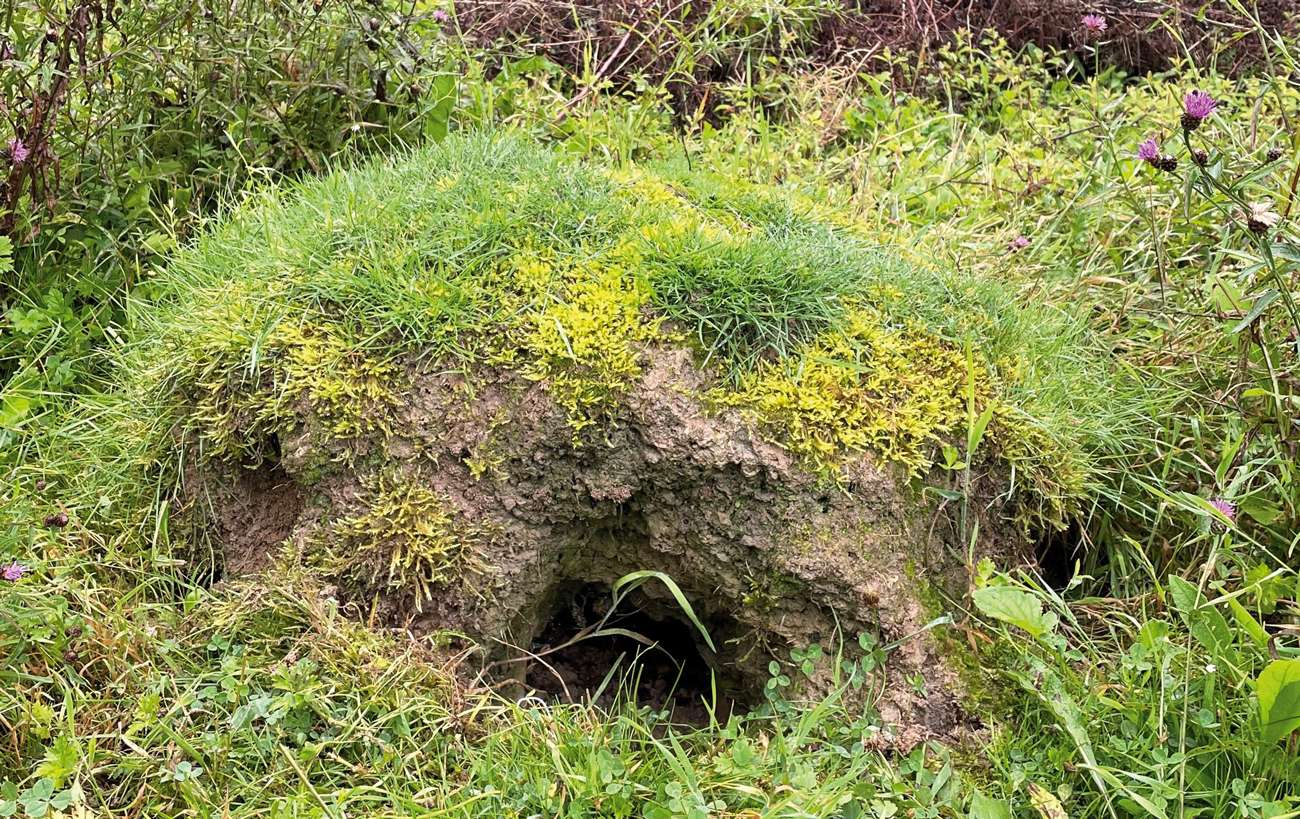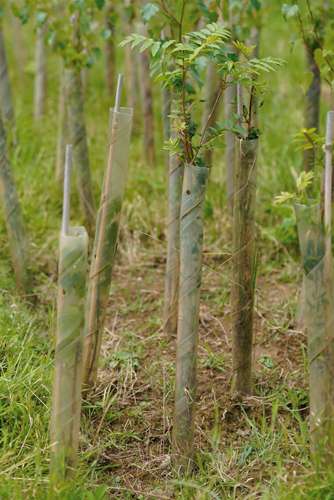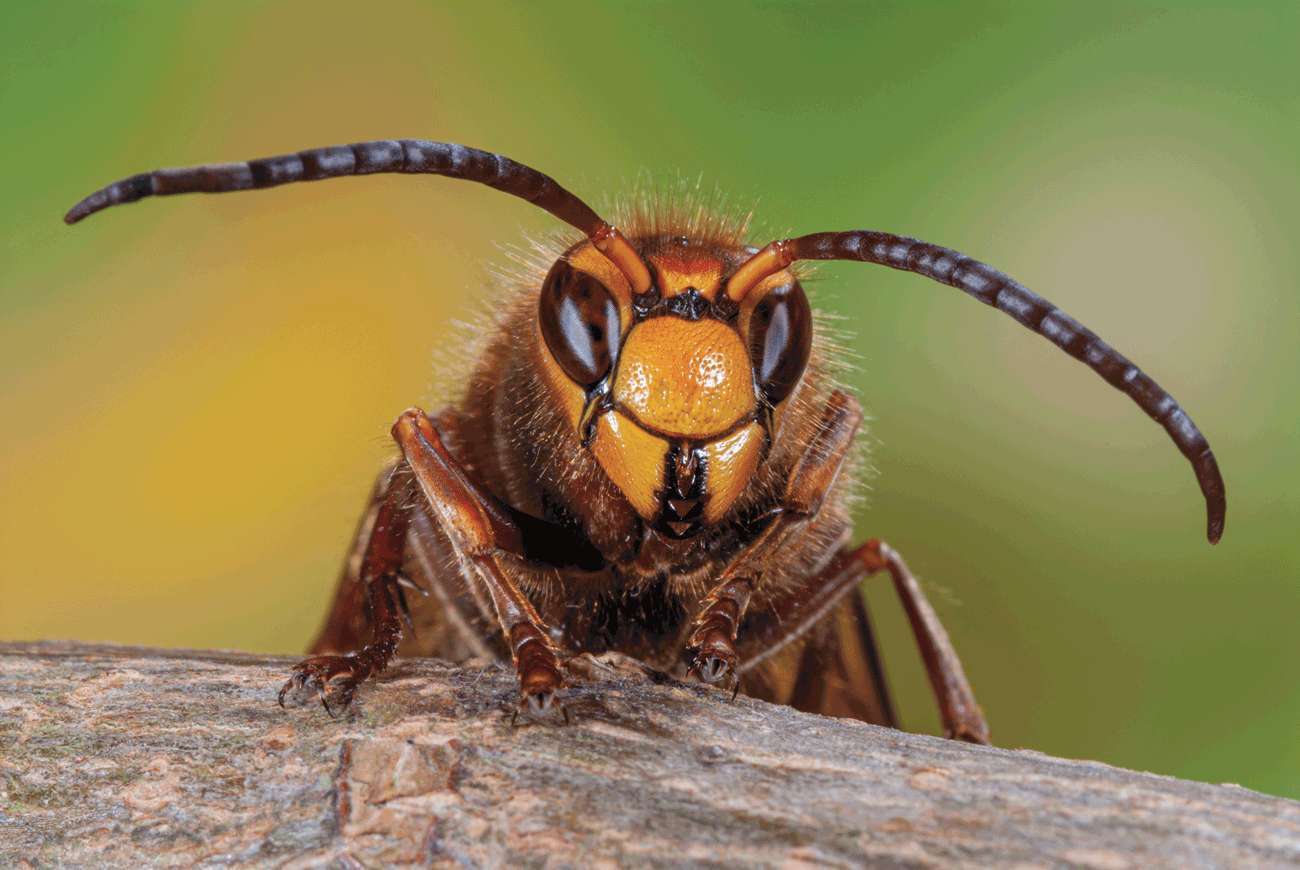
SURREY (ant) HILLS – photo by Andy Bamford
We had such a lovely plan: we would have a volunteer evening mid-week instead of the usual Sunday morning. We would take advantage of the light evenings, do a few jobs, and get to know some of our new members over a fish and chip picnic supper. I also hoped that if we hung about at dusk we might see one of our resident badgers.
But instead of being rained off, which is the usual reason for cancelling summer plans, there was the third day of intense heat and threatened thunderstorms which merited an amber warning. It was sensible to cancel, but disappointing.
We have all noticed unusual weather patterns recently and it seems so have some of the creatures which we might not always pay much attention to. Several people have told me that they have never seen such ant activity as they have this year.
I have a painful reason to be very aware of ants. I was working round the saplings for our new hedge on Beryl Harvey Field when I lifted a large clump of grass and uncovered a huge ant colony. Before I could step back some ants got into my gardening glove and bit me. It is astonishing how painful an ant’s bite can be – and how disproportionate to its size. Some ants not only bite but spray formic acid to defend themselves. As a result I developed large red lumps and blisters, and my hand throbbed. Three weeks on and the red patches on my hand are finally disappearing. Appropriately, these ants belong to the family of Formicidae.
The black ants usually found in gardens do not sting or bite. So I must have disturbed red ants or southern wood ants. The latter is an aggressive predator and feeds on a variety of invertebrates which the workers ‘harvest’ from the area round the colony. Ants also keep aphids on grass roots and ‘milk’ them for honeydew. These ants – up to half a million of them – live in large nests. Some make mounds over their nests to regulate the temperature and humidity, and secrete an antibiotic chemical to discourage moulds. The photograph accompanying this article is the largest on Beryl Harvey Field.
Plastic tree guards – photo by Mark Matthews
Infertile female workers wait upon queens and their eggs. In the spring, a generation of fertile male and female ants are raised, which take to air to mate. The females then lose their wings and go to find new colonies. It is the heaps of discarded, silvery wings which have been so noticeable this year. And the ant bites.
No work/life balance for the ant! Ceaselessly hurrying and scurrying, industrious and purposeful. They can cart things about which are 50 times their body weight. Undoubtedly, one of evolution’s great successes and it has been estimated they have been around for 180 million years. Here before us – and probably will be after.
It has been a struggle this year to keep the area round the newly planted saplings on Beryl Harvey weed free. It is also noticeable that the tree guards supplied by the Woodland Trust are not perfect. In the heat it seems that some of the little plants ‘cook’ in the plastic tubes. The plastic is claimed to be recyclable – and it is already fracturing into nasty sharp shards. Breaking up into bits isn’t what one would hope ‘recycling’ means. It is good to read, therefore, that the Woodland Trust are experimenting with other materials to protect young trees and have pledged to stop using plastic tubes by the end of the year. They are working with 14 different materials including British wool and cardboard at their Avoncliff site in Wiltshire. Fingers crossed.
Beryl Harvey Fields is Cranleigh’s nature conservation site. We need volunteers. For further information: visit our conservation site in Cranleigh – or better, volunteer. Contact Philip Townsend at: for details.
Find out more about the Beryl Harvey Fields HERE.












